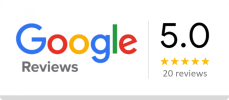In 2025, websites need to do more than just look good. They must engage users, build trust, and drive conversions. In this blog, we’ll cover the essential elements every website should have, plus bonus features to help you stand out online.
Why Website Content Matters for SEO and User Experience
Before diving in, it’s important to understand that every section of your website contributes to:
- Search engine optimization (SEO)
- Visitor retention
- Lead generation
- Brand trust
Let’s break down the must-have components for a successful website in 2025.
1. A Clear, High Converting Homepage
Your homepage is the most visited and most important page on your site. It should instantly communicate:
- Who you are
- What you do
- How you help your audience
SEO Tips:
- Use a clear H1 heading with your main keywords (e.g., “Accounting for Small Businesses”)
- Add internal links to other key pages
- Use compelling CTA buttons like “Get a Free Quote” or “See Our Services”
2. About Page That Builds Trust and Authority
The About page is your chance to humanize your brand. Share:
- Your story and mission
- Team bios with real photos
- Certifications, partnerships, or awards
- SEO Tip: Use keywords like “About [Your Business Name]” or “Meet the Team at [Business Name]”
3. Services or Products Page
A dedicated Services or Products page allows visitors (and search engines) to understand what you offer.
Include:
- A clear list of offerings
- Benefits and use cases
- Pricing or packages (if relevant)
- CTAs like “Book a Call” or “Shop Now”
SEO Tip: Use long-tail keywords like “affordable eCommerce solutions”
4. Easy to Use Contact Page
If visitors can’t reach you, you lose leads.
Must-haves:
- Contact form
- Email and phone number
- Social media links
- Google Maps integration (for local SEO)
SEO Tip: Use local keywords like “Contact local lawyer in [City]”
5. Testimonials or Client Reviews
Social proof builds trust and boosts conversion rates.
Include:
- Real client quotes
- Star ratings
- Video testimonials
- Case study links
SEO Tip: Use schema markup for reviews to get rich snippets in search results.
6. Portfolio or Case Studies (If Relevant)
Showcase your work and process, especially if you’re in a creative or client-based industry.
Best practices:
- Highlight before & after results
- Share metrics or outcomes
- Use visual content and client feedback
SEO Tip: Optimize images with alt tags (e.g., “custom WordPress website example”)
7. Blog or Resources Section (for SEO Growth)
Publishing regular blog content helps:
- Drive organic traffic
- Improve keyword rankings
- Establish thought leadership
SEO Tip: Write blog posts targeting common search queries like:
- “How much does it cost to build a website in 2025?”
- “Best clothing trends 2025”
8. Privacy Policy and Terms Pages
Not glamorous, but essential especially if you’re collecting user data.
Required for:
- GDPR/CCPA compliance
- Trust with users
- Running ads or analytics
Bonus Features That Improve UX and SEO
- Live Chat / Chatbots (engage users faster)
- Email opt-ins / lead magnets (grow your list)
- Fast page speed & mobile responsiveness (ranking factors!)
- SSL Certificate (HTTPS) for secure browsing
- 404 error page with helpful links
Final Thoughts:
By building a website in 2025 that is both user-friendly and SEO-optimized, you’ll improve your chances of showing up in search results and converting visitors into loyal clients or customers.
Need Help Building an SEO Friendly Website?
Whether you’re just starting out or ready to scale, we can help you design a website that works for you. Also, you can go online and search for your local website design Auckland.

